Don't wanna be here? Send us removal request.
Photo






Week 14: Heidi Norton
My father wrote a home remedy on a piece of paper in 1977, the year I was born. It was folded and pressed like a dried-up flower in a Fox Fire book he sent me in the mail. It spoke of cobwebs, bacon, and muslin, a supposed natural remedy for a wound made by a rusty nail. A year after I received the note I showed it to him and he refused to believe he wrote it. My parent’s past went missing, they wrote their own self-mythology, retrospectively, using time and space to distance themselves from their previous life as homesteaders. My work is in part an attempt to reclaim their time lost. Through the mediums of photography, sculpture, and painting my work speaks to the instability and liminality of time, while investigating ideas of preservation through material and modes of display.
1 note
·
View note
Photo





Week 14: Adam Thorman
Adam Thorman was born and raised in the San Francisco Bay Area. He received his BFA in Photography from Tisch School of the Arts at New York University in 2003 and his MFA from Arizona State University in 2009. His work has been exhibited nationally, including at the Sam Lee Gallery in Los Angeles and the Center for Creative Photography in Tucson. His work is in the permanent collection of SFMOMA. He has taught at Prescott College in Arizona, Art Institute of Pittsburgh - Online Division, workshops at Kala Art Institute and is currently teaching photography at The Athenian School in Danville, CA. He lives and works in Oakland, CA.
3 notes
·
View notes
Photo





Week 13: David Zilber
A native of Toronto, Ontario, David Chaim Jacob Zilber (b. 1985) is a professional chef and butcher who has worked in fine dining establishments across Canada since 2004. Photography has been one of his chief creative outlets over the past 4 years, alongside cooking, painting, writing and industrial design. Working exclusively with 135 format film, his work has been shown across North America, and featured in projects such as Vice, It's Nice That, Subbacultcha and Street Carnage. He is the creator of the on-line photojournal Recidivism and Prolix, a book of black and white photographs, was released in September 2011 through Montreal's Trapshot Archives. He has exhibited in group and solo exhibitions in Amsterdam, Toronto, New York, Vancouver and L.A. He currently lives and works in Vancouver, British Columbia.
0 notes
Photo






Week 13: Lori Nix
In my newest body of work "The City" I have imagined a city of our future, where something either natural or as the result of mankind, has emptied the city of it's human inhabitants. Art museums, Broadway theaters, laundromats and bars no longer function. The walls are deteriorating, the ceilings are falling in, the structures barely stand, yet Mother Nature is slowly taking them over. These spaces are filled with flora, fauna and insects, reclaiming what was theirs before man's encroachment. I am afraid of what the future holds if we do not change our ways regarding the climate, but at the same time I am fascinated by what a changing world can bring.
2 notes
·
View notes
Photo






Week 12: David Hilliard
For years I have been actively documenting my life and the lives of those around me, recording events and attempting to create order in a sometimes chaotic world. While my photographs focus on the personal, the familiar and the simply ordinary, the work strikes a balance between autobiography and fiction. Within the photographs physical distance is often manipulated to represent emotional distance. The casual glances people share can take on a deeper significance, and what initially appears subjective and intimate is quite often a commentary on the larger contours of life. For me, the construction of panoramic photographs, comprised of various single images, acts as a visual language. Focal planes shift, panel by panel. This sequencing of photographs and shifting of focal planes allows me the luxury of guiding the viewer across the photograph, directing their eye; an effect which could not be achieved through a single image. I continually aspire to represent the spaces we inhabit, relationships we create, and the objects with which we surround ourselves. I hope the messages the photographs deliver speak to the personal as well as the universal experience. I find the enduring power and the sheer ability of a photograph to express a thought, a moment, or an idea, to be the most powerful expression of myself, both as an artist, and as an individual.
1 note
·
View note
Photo






Week 12: Anthony Goicolea
Pathetic Fallacy is a collection of graphite drawings on layered mylar and large scale digitally composited photographs. The term “pathetic fallacy,” coined by John Ruskin in Modern Painters (1856), describes the treatment of inanimate objects and places as if they had human feelings, thoughts or sensations.
In this new group of photographs and drawings, nature takes on anthropomorphic characteristics. A new, uneasy equilibrium is created as human and animal bodies merge, trees grow hair and pump blood, flies multiply into tornadoes and wild dogs settle in the ruins of an abandoned home. Anthony Goicolea’s version of pathetic fallacy becomes an atmospheric elegy of passing time, transition, loss and decay. In a new hybridized world of man and nature, nothing is permanent and nothing is safe. Humans, plants and animals have cross-pollinated; they have merged, evolved and adopted different features from each other. Objects acquire pathos and empathy while the decomposition of material things reflects the world in flux.
Oftentimes we celebrate life with beautified images, but Goicolea portrays life as a riot of organic forms, each grasping for light and air with an almost violent greed. Nature is economical in the structures it uses: vascular forms repeat in bundles of nerves, blood vessels and rivers when seen from above. in his drawings Giocolea superimposes these forms, transitioning from one to the other in a seamless manner that casts an unflinching eye on anatomy.
Goicolea practices a nominal realism in his photography, but each scene gathers far-flung elements that generate subtle cognitive dissonances. As signs, these images generate a primary emotion, often sadness, loneliness or a sense of a lost past, but underneath them is a geographic surrealism, a nagging impression that these places do not really exist. Or that they exist in many places, though perhaps only in the imagination.
3 notes
·
View notes
Photo
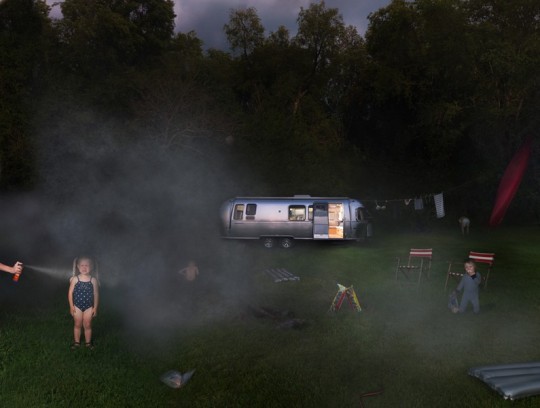





Week 11: Julie Blackmon
The Dutch proverb “a Jan Steen household” originated in the 17th century and is used today to refer to a home in disarray, full of rowdy children and boisterous family gatherings. The paintings of Steen, along with those of other Dutch and Flemish genre painters, helped inspire this body of work. I am the oldest of nine children and now the mother of three. As Steen’s personal narratives of family life depicted nearly 400 yrs. ago, the conflation of art and life is an area I have explored in photographing the everyday life of my family and the lives of my sisters and their families at home. These images are both fictional and auto-biographical, and reflect not only our lives today and as children growing up in a large family, but also move beyond the documentary to explore the fantastic elements of our everyday lives, both imagined and real. The stress, the chaos, and the need to simultaneously escape and connect are issue that I investigate in this body of work. We live in a culture where we are both “child centered” and “self-obsessed.” The struggle between living in the moment versus escaping to another reality is intense since these two opposites strive to dominate. Caught in the swirl of soccer practices, play dates, work, and trying to find our way in our “make-over” culture, we must still create the space to find ourselves. The expectations of family life have never been more at odds with each other. These issues, as well as the relationship between the domestic landscape of the past and present, are issues I have explored in these photographs. I believe there are moments that can be found throughout any given day that bring sanctuary. It is in finding these moments amidst the stress of the everyday that my life as a mother parallels my work as an artist, and where the dynamics of family life throughout time seem remarkably unchanged. As an artist and as a mother, I believe life’s most poignant moments come from the ability to fuse fantasy and reality: to see the mythic amidst the chaos.
0 notes
Photo

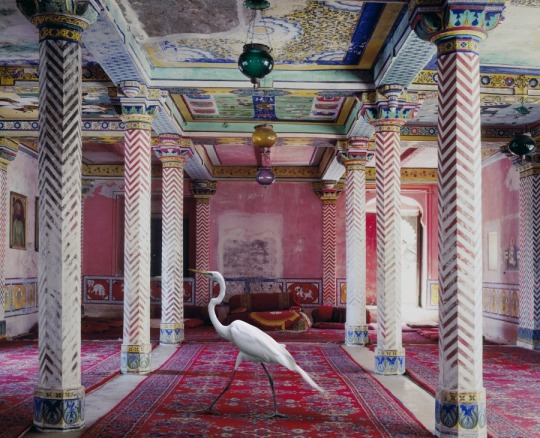


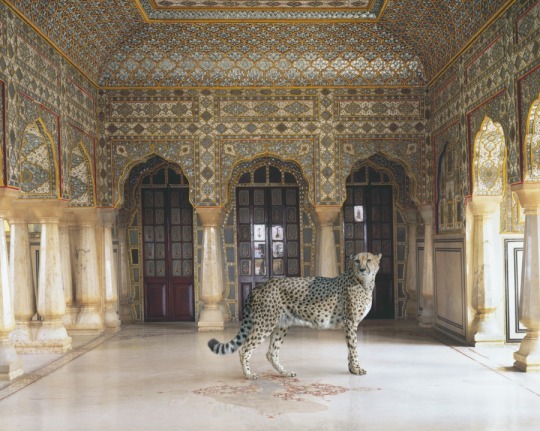

Week 11: Karen Knorr
Karen Knorr’s past work from the 1980’s onwards took as its theme the ideas of power that underlie cultural heritage, playfully challenging the underlying assumptions of fine art collections in academies and museums in Europe through photography and video. Since 2008 her work has taken a new turn and focused its gaze on the upper caste culture of the Rajput in India and its relationship to the "other" through the use of photography, video and performance. The photographic series considers men's space (mardana) and women's space (zanana) in Mughal and Rajput palace architecture, havelis and mausoleums through large format digital photography.
Karen Knorr celebrates the rich visual culture, the foundation myths and stories of northern India, focusing on Rajasthan and using sacred and secular sites to consider caste, femininity and its relationship to the animal world. Interiors are painstakingly photographed with a large format Sinar P3 analogue camera and scanned to very high resolution. Live animals are inserted into the architectural sites, fusing high resolution digital with analogue photography. Animals photographed in sanctuaries, zoos and cities inhabit palaces, mausoleums , temples and holy sites, interrogating Indian cultural heritage and rigid hierarchies. Cranes, zebus, langurs, tigers and elephants mutate from princely pets to avatars of past feminine historic characters, blurring boundaries between reality and illusion and reinventing the Panchatantra for the 21st century.
0 notes
Photo





Week 10: Emmet Gowin
American photographer. He was a student of fine arts at Richmond Professional Institute, VA, from 1961 to 1965 and at the Rhode Island School of Design, where he studied with Harry Callahan from 1965 to 1967. From the late 1960s he was also influenced by Frederick Sommer. Gowin’s deeply religious upbringing played an important role in his work. Most of his photographs from the mid-1960s until the early 1980s focus upon his wife and her family in Danville, VA, transforming them into universal symbols of ritual and family relationships. Many of these are deeply personal and almost religious in the powerful symbols they evoke; in Edith, Danville, Virginia, 1971 (see Gowin, 1976, p. 51) his wife is seen, as if clandestinely, in the privacy of a dark bedroom. His occasional use of a lens that vignettes the image into a circle also evoked ideas of a microcosm of the earth or of tourist photographs taken with an early Kodak camera.
8 notes
·
View notes
Photo





Week 10: Robert Adams
Robert Adams was born in Orange, New Jersey, in 1937. His refined black-and-white photographs document scenes of the American West of the past four decades, revealing the impact of human activity on the last vestiges of wilderness and open space. Although often devoid of human subjects, or sparsely populated, Adams’s photographs capture the physical traces of human life: a garbage-strewn roadside, a clear-cut forest, a half-built house. An underlying tension in Adams’s body of work is the contradiction between landscapes visibly transformed or scarred by human presence and the inherent beauty of light and land rendered by the camera. Adams’s complex photographs expose the hollowness of the nineteenth-century American doctrine of Manifest Destiny, expressing somber indignation at the idea (still alive in the twenty-first century) that the West represents an unlimited natural resource for human consumption. But his work also conveys hope that change can be effected, and it speaks with joy of what remains glorious in the West. Adams received a BA from the University of Redlands in California and a PhD in English from the University of Southern California. He has received numerous awards, including a John D. and Catherine T. MacArthur Foundation Award (1994); the Spectrum International Prize for Photography (1995); and the Deutsche Börse Photography Prize (2006). Major exhibitions include San Francisco Museum of Modern Art (2005); Yale University Art Gallery (2002); Denver Art Museum (1993); Philadelphia Museum of Art (1989); and the Museum of Modern Art, New York (1979). Adams lives and works in northwestern Oregon.
1 note
·
View note
Photo





Week 9: Osma Harvilahti
Couldn't find an artist statement or bio anywhere.
0 notes
Photo





Week 9: Andy Sewell
Hampstead Heath was once part of the countryside surrounding London and is now a green fragment deep within the urban landscape. It is a place of ancient trees, tall grass and thickets dense enough to get lost in – if only briefly. I go to the Heath to be somewhere that feels natural, yet I know this is no pathless wood. The Heath is as managed as any other part of London but managed to feel wild.
In a way this project is about perceptions of what is natural, but it’s also an attempt to explore what EO Wilson called the human condition of “Biophilia”, being drawn to somewhere that feels natural without knowing why. Over the last five years I have spent many hours walking on the Heath. With this set of pictures I hope to convey something of what I was looking for and what I found.
1 note
·
View note
Photo






Week 8: Elspeth Diederix
Elspeth Diederix (born Nairobi, Kenya, 1971) is an artist who is always on the move. Travelling for her is a way of life. Even though most of her photographs are taken in exotic locations, evidence of this is seldom found in her work. Purposefully she herself remains on the outside. Instead of being absorbed by the setting of her subject, she prefers to maintain a high degree of detachment. This enables her to create a sense of alienation and in her photographs she achieves this by stripping everyday objects of what normally one takes for granted. There comes a moment when everyday objects lose their sense of familiarity, acquire another meaning and seem to become almost abstract. Such moments are used by Elspeth Diederix as a starting point for her images. Diederix started at the art academy by studying painting and sculpture but soon tried her hand at photography, which she found to be a more effective way of expressing her ideas. Diederix deliberately abstains from the use of digital manipulation techniques but instead in her photographs special effects are achieved by manual intervention. Effects such as optical illusion, false perspective, the mixing of colours and forms, are elements inherent to the art of painting and are applied by her in the creation of the photographic image. Diederix is playful and inventive in her visualisation of images but strict and almost mathematical in constructing her compositions. Even though her photographs may give the impression that they are brought about by chance, they are in fact staged to an extreme degree. A plastic bag may become a flower, a plastic bottle part of a classical still life. Is a motorbike still a motorbike when it has been covered all over with pink pigment? And what is the meaning of a “post-it” label on the trunk of a solitary tree in a snow covered landscape?
5 notes
·
View notes
Photo





Week 8: Marleen Sleeuwits
"Over the past few years I have photographed interiors encountered in random places: the dead corners of office buildings, waiting rooms in airports or emty hotel corridors. They are spaces that lack a connection with the outside world, so it is unclear what their function is, where they are and what time of day they were photographed. They almost appear to be situated beyond consciousness. The feeling of enstrangement and disonnection is at the heart of my work.
"Here lies a paradox: the spaces that catch my attention are in some sense non-spaces. Lacking a clear function or any reference to the outside world, they are in the end nothing but spaces. The paradox is evident to anyone looking at the images; I try to capture the experience of being disconnected from a physical space by almost inviting the viewer to step inside the picture and relate physically to what is portrayed there. Print size and sharpness are therefore of essential importance. In Interiors I play an intricate and complex game with scale, perception, and the tension between reality and illusion."
2 notes
·
View notes
Photo








Week 7: Taryn Simon, specifically her project titled "An American Index of the Hidden and Unfamiliar"
In An American Index of the Hidden and Unfamiliar, Taryn Simon compiles an inventory of what lies hidden and out-of-view within the borders of the United States. She examines a culture through documentation of subjects from domains including: science, government, medicine, entertainment, nature, security, and religion. Confronting the divide between those with and without the privilege of access, Simon's collection reflects and reveals that which is integral to America's foundation, mythology and daily functioning.
5 notes
·
View notes
Photo

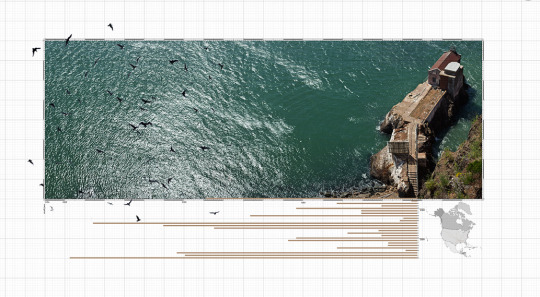
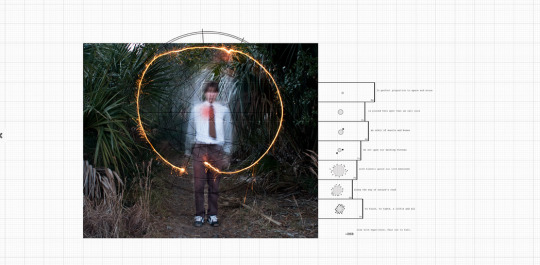
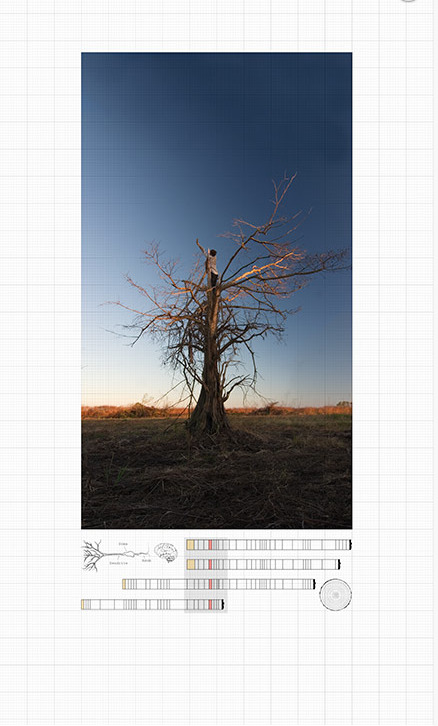
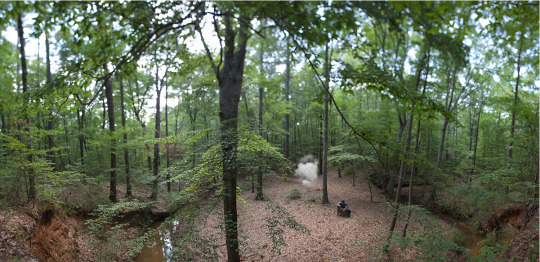
Week 7: Jay Gould
Jay Gould is an artist and a member of the faculty at the Maryland Institute College of Art (MICA). Originally from Minneapolis, Minnesota, Gould recieved his B.F.A. in photography from the University of Wisconsin and his M.F.A. from the Savannah College of Art & Design in Georgia. His work, which integrates scientific topics into photographic projects, has won numerous national awards, such as the Berenice Abbott Prize for an emerging photographer, the Jeannie Pierce Award, and First Place at the Newspace Center for Photography’s International Juried Exhibition. Gould’s work is widely exhibited around the country, making solo and group exhibition appearances at the University of Notre Dame, The Julia Dean Gallery in Los Angeles, the Fort Collins Museum of Contemporary Art, and theGriffin Museum, just to name a few. Gould also participates in the larger artistic community as a member of the faculty at the Maine Media Workshops, the Chair of the Society for Photographic Education’s SouthCentral regional board and as a frequent visiting lecturer at a variety of schools and conferences.
5 notes
·
View notes
Photo





Week 6: Matt Siber
Top 2 Images: Inspired by the proliferation of very tall signs in the American Mid-West, Floating Logos seeks to draw attention to this often overlooked form of advertising. Perched atop very tall poles or stanchions, these corporate beacons emit their message by looming over us in their glowing, plastic perfection. Elimination of the support structure in the photographs allows the signs to literally float above the earth.
Making the signs appear to float not only draws attention to this type of signage but also gives them, and the companies that put them there, an otherworldly quality. References can be drawn to religious iconography, the supernatural, popular notions of extraterrestrials, or science fiction films such as Blade Runner. Each of these references refer to something that can profoundly affect our lives yet is just beyond our control and comprehension.
Bottom 3 Images: The Untitled Project is rooted in an underlying interest in the nature of power. With the removal of all traces of text from the photographs, the project explores the manifestation of power between large groups of people in the form of public and semi-public language. The absence of the printed word not only draws attention to the role text plays in the modern landscape but also simultaneously emphasizes alternative forms of communication such as symbols, colors, architecture and corporate branding. In doing this, it serves to point out the growing number of ways in which public voices communicate without using traditional forms of written language.
The reintroduction of the text takes written language out of the context of its intended viewing environment. The composition of the layouts remain true to the composition of their corresponding photographs in order to draw attention to relative size, location and orientation. The isolation of the text from its original graphic design and accompanying logos, photographs and icons helps to further explore the nature of communication in the urban landscape as a combination of visual and literal signifiers.
1 note
·
View note